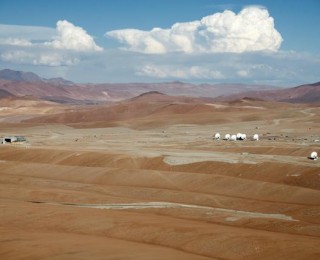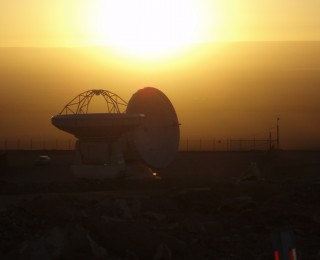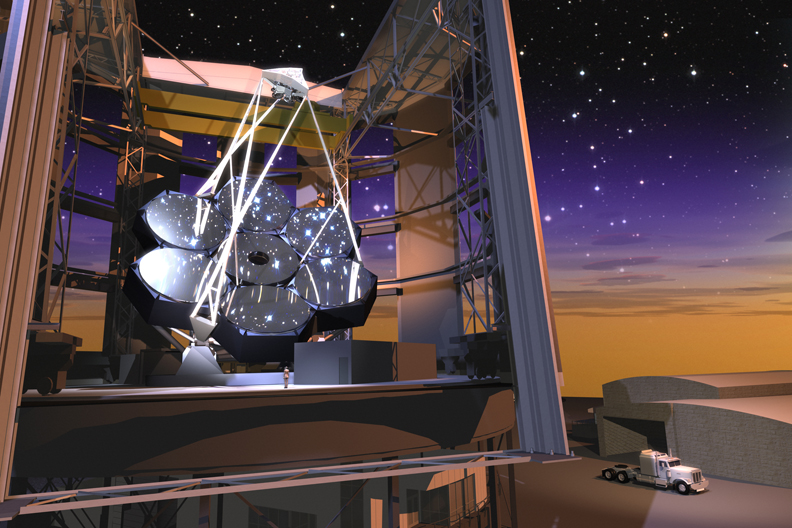
by Rosanna Tilbrook | Apr 24, 2020 | Personal Experiences
Ever wondered what it’s like to work at an observatory? Then you’re in the right place! Find out what happens when you spend a night at a telescope.

by Adele Plunkett | May 11, 2012 | Personal Experiences
During the three months that I worked as a visitor in the “Commissioning and Science Verification” group at ALMA, I had the opportunity to spend four week-long “turnos” (shifts) in northern Chile at the ALMA Operations Support Facility (OSF), where the antennas are operated. If you’re interested to learn more about ALMA, you can check out the webpage, or my two previous posts about my experiences during turnos at ALMA. For some of the early science results from ALMA, check out these astrobites.Scientifically and personally, ALMA is an interesting and inspiring place to work. Making observations and then analyzing data, I worked with a number of people with a variety of positions and expertise. At the end of a recent turno I asked them a few simple questions to get a better idea of what a job at ALMA entails. Below are their responses (to the questions in bold), which represent just one sample of perspectives, but to me are sufficiently interesting and demonstrate the diversity and complexity of this project.1. How long have you worked at ALMA? What is your position/title here?At any given time at the OSF, a team of ALMA staff work together to tackle all aspects of the system. Job titles (for those interviewed here) at ALMA include commissioning scientist, data analyst and system astronomer. ALMA is an international partnership of Europe, North America and East Asia in cooperation with the Republic of Chile, so the control room is nearly always staffed with a very diverse group of people from around the world. Many organizations contribute funding and personnel for the project.One of the scientists...
by Adele Plunkett | Mar 4, 2012 | Personal Experiences
Note: This is the second astrobite in a periodic series chronicling my adventures doing astronomy research in Chile (click here to read the first astrobite of the series). For details on ALMA (the Atacama Large Millimeter/submillimeter Array), check out the observatory’s website, and go here for resources with more details on ALMA science and techniques. An Introduction to Millimeter/Sub-millimeter InterferometryAn important feature of a telescope is its resolution, or the degree of detail that it can observe. The resolution depends on the ratio of wavelength of light to diameter of the telescope dish/mirror; in other words, observations will be higher resolution if they are of shorter wavelength light and/or made with a larger diameter telescope. ALMA is sensitive to light with wavelengths that are from about 300 micrometers to 3 millimeters (approximately 0.0003 to 0.003 meters). This is called millimeter and submillimeter radiation, and it falls at the short wavelength (high frequency) end of the radio spectrum. For comparison, visible light has wavelengths about 1000 times shorter, between roughly 380 and 750 nanometers (0.00000038 to 0.00000075 meters). This balance of wavelength and telescope diameter results in the interesting fact that a single 7- or 12-m ALMA antenna “sees” only slightly more detail than your eye can see in visible wavelengths.The science goals of ALMA require very high resolution. (A quick note: resolution is measured as an angle, and in this post I will use units of arcseconds. Remember, 1 degree equals 3600 arcseconds, and for reference, the apparent size of the moon is about 0.5 degrees, or 1800 arcseconds.) Given the wavelength constraints, the best way to achieve high...

by Adele Plunkett | Jan 29, 2012 | Personal Experiences
Note: This is the first astrobite in what I hope will be a periodic series about my adventures doing astronomy research in a foreign country. I’ll be living and doing research in Santiago, Chile, for one year with funding from the Fulbright Commission for Educational Exchange Between the USA and Chile. Taking advantage of this opportunity to be in Chile during commissioning and Early Science of the ALMA Observatory, I’m spending three months as a visiting scientist in the “Commissioning and Science Verification” (CSV) group of ALMA. For details on ALMA (the Atacama Large Millimeter/submillimeter Array), check out the website. During my time with CSV, I will spend 8 day “turnos” (or shifts) at the ALMA Operations Support Facility (OSF) in the Atacama Desert, one of the driest places in the world and really quite spectacular! The rest of my time with ALMA will be spent at the Santiago Central Offices (SCO) working on data reduction and analysis in preparations for ALMA “Full Science” (see results from ALMA Early Science in this astrobite). Here I will describe one day of my first turno. This time, I’m working the “day shift”, which begins in the afternoon and runs until midnight.11:00 am — Good morning (it’s still morning…)! Time to take a walk around, maybe I will hit the gym. Of course, exercising either the mind or the body can be a challenge at an elevation of 2900 meters (about 10,000 feet). At least we’re not up with the antennas at 5000 meters!12:20 pm — Quick shower. Quick for two reasons: (1) Water is scarce in the Atacama Desert, so we...

by Tanmoy Laskar | May 8, 2011 | Quick Notes
Astronomers seldom touch, smell, hear, or taste astronomical sources – their primary sensory input is light. Read about how astronomers use the electromagnetic spectrum to unravel the mysteries of the Universe!

by Courtney Dressing | Apr 27, 2011 | Quick Notes
Check out our newest glossary describing the ground-based and space-based observatories used by astronomers.





